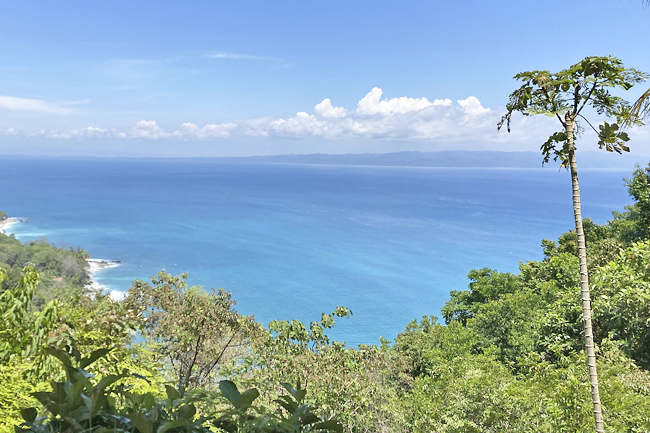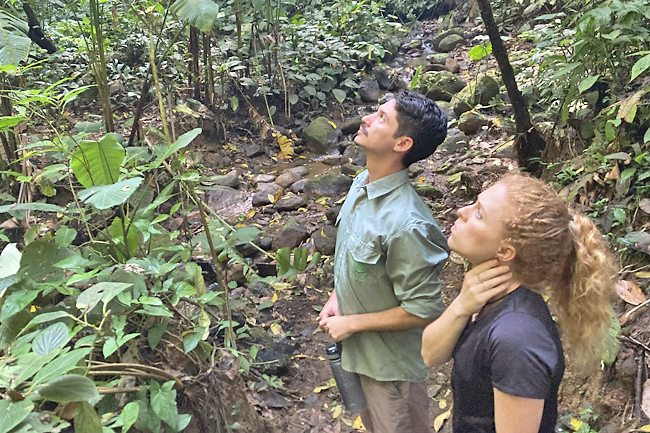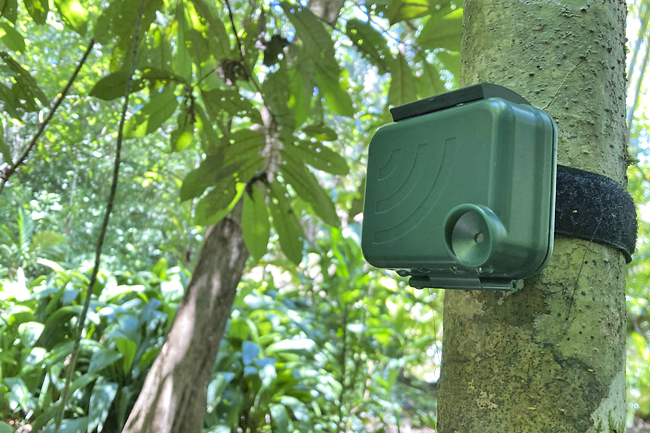COSTA RICA (AP) – The endangered Geoffrey’s spider monkeys that dangle high in the rainforest canopy are elusive and hard for scientists to track.
So biologist Jenna Lawson hid 350 audio monitors in trees across Costa Rica’s lush Osa Peninsula to spy on them.
The devices recorded the sounds of the forest and surrounding countryside for a week, collecting so much data that Lawson could have spent years listening to it all.
Instead, she fed it into artificial intelligence (AI) systems trained to instantly recognise spider monkey calls and detect where the animals traveled. One of the world’s largest acoustic wildlife studies when Lawson began the project in 2021, it revealed troubling findings about the health of a treasured wildlife refuge.
More of this AI-assisted wildlife surveillance is “urgently needed” as some 28 per cent of all plant and animal species are now at risk of extinction, according to a paper published in the academic journal Science recently.
Researchers from Dutch and Danish universities showed that machine-learning techniques can “handle huge amounts of data and uncover sound patterns, allowing for faster, cheaper, and better ecological studies” that can aid in biodiversity conservation. But many technical challenges remain.
Tech giant Microsoft’s philanthropic AI for Good Lab announced this month it is hoping to answer some of those technical challenges with a new kind of hardware and computing system for eavesdropping on the planet’s wildest places.
“Those remote places are also the most important places on the Earth from a biodiversity perspective,” said Microsoft’s chief data scientist Juan Lavista Ferres in an interview last week by video call from Colombia, where a research team was preparing to test the new approach.
Powered by the sun and energy-efficient AI computer chips, the devices can run for years rather than weeks without human intervention. And they can regularly transmit their data online via low-Earth orbit satellites. It’s called Sparrow, short for Solar-Powered Acoustic and Remote Recording Observation Watch.
Director of an AI-focused research centre at the University of the Andes Pablo Arbelaez said a first Sparrow test will happen in a jungle preserve along Colombia’s largest river, the Magdalena. Eventually, the researchers hope to get a better idea of how deforestation – and efforts to reverse it – is affecting the population behaviour of jaguars, blue-beaked paujil birds, spider monkeys and other endangered species.
Another project closer to Microsoft headquarters will monitor forests in Washington state’s Cascade Mountains. By late 2025, Lavista Ferres plans to have devices on all continents, from remote corners of the Amazon rainforest to gorilla habitats of the Democratic Republic of the Congo. That will then be “open-sourced” to make it accessible to a wide body of researchers in real time, but with measures to obscure sensitive location data.
“What we don’t want is these devices to ever be used for poachers to understand where the animals are,” Lavista Ferres said.
It was a concern about encroachments on Costa Rican spider monkey habitat that led Lawson, then at Imperial College London, to undertake her ambitious bio-acoustic study three years ago. She persuaded landowners to let her place recording devices on their properties outside Corcovado National Park, a jewel of Costa Rica’s decades-long efforts to preserve biodiversity by encouraging wildlife tourism.
“She basically realised the spider monkey is in a really critical situation,” said local environmentalist and bug scientist Jim Córdoba-Alfaro. On a follow-up visit last year, he and Lawson trekked across a private reserve with an Associated Press reporter to observe the monkeys and check on the audio monitors.
Compared to the charismatic capuchin monkey and the notoriously loud howler monkey – both commonly seen or heard throughout Costa Rica – spider monkeys are far more wary of humans and the changes they bring.
“They’re the most sensitive of the primates that we have here,” said Lawson.
“The spider monkey would be the first animal to leave when there’s signs of trouble. They would be the last animal to come back once forests are restored because they need mature secondary and primary forest to be able to survive.”





